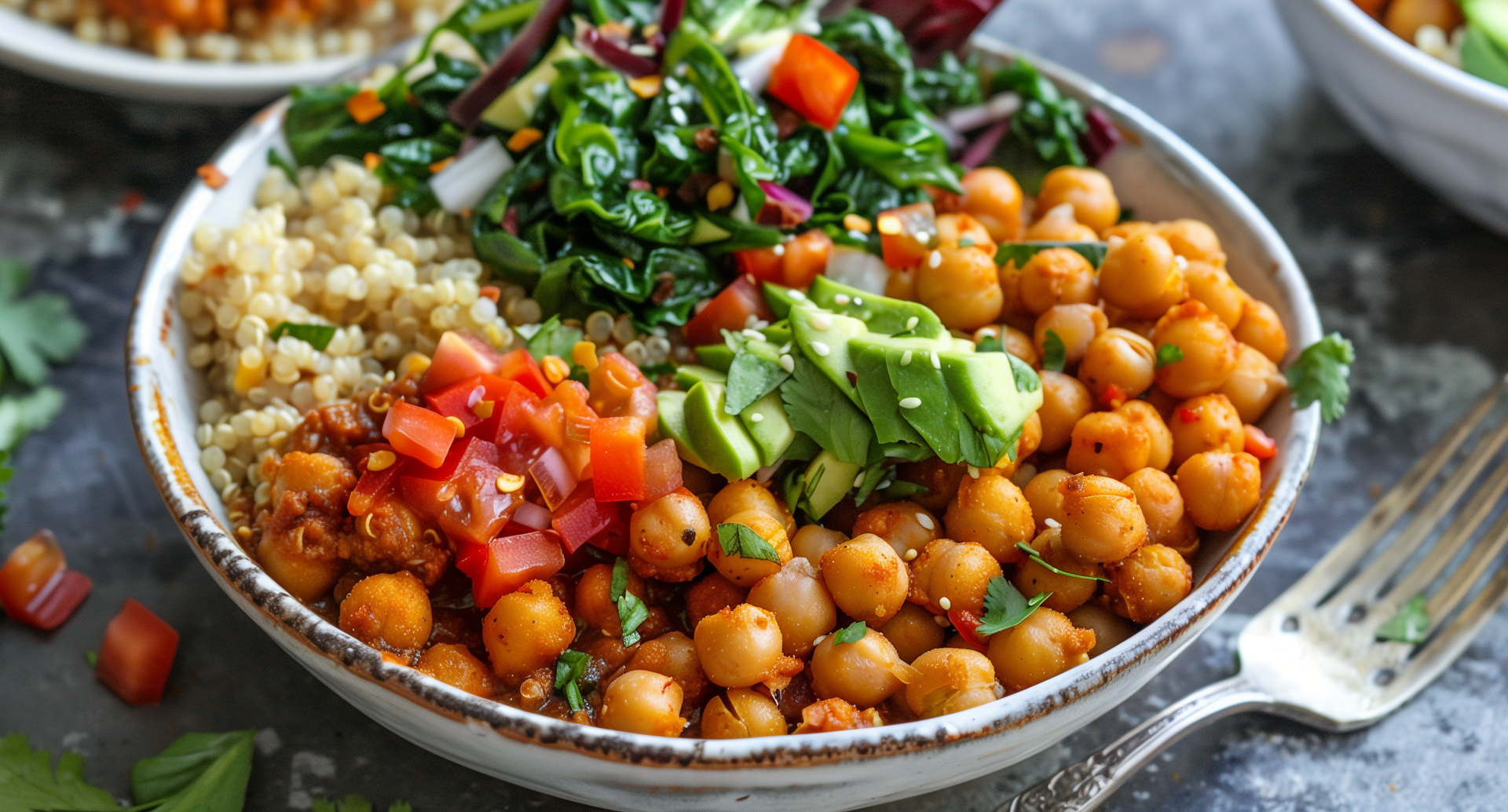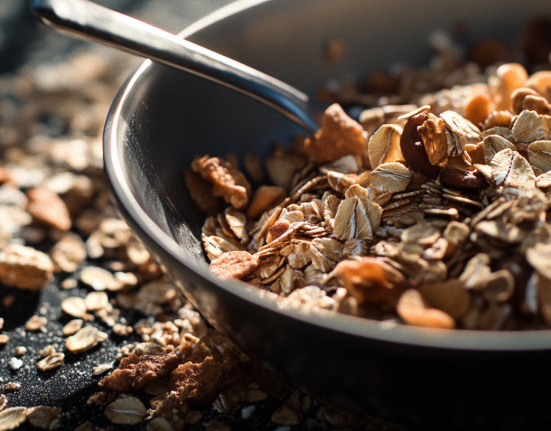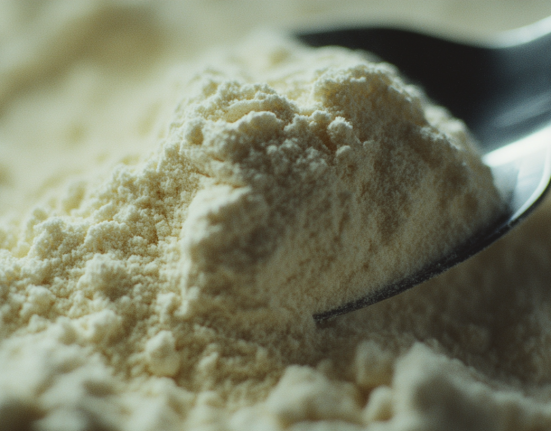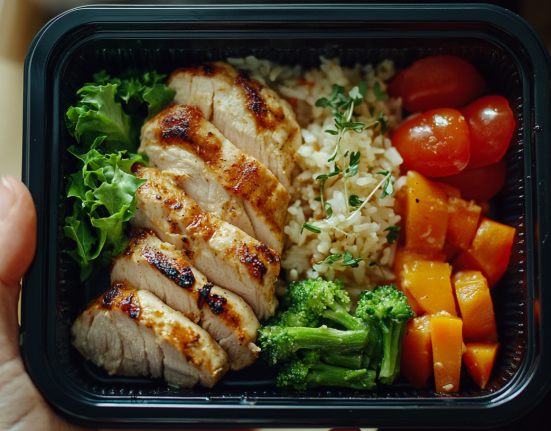Spicy chickpea and quinoa bowls are a vibrant and healthful dish that caters to a wide array of dietary preferences. This dish combines the nutty flavors of quinoa, a highly nutritious grain that has gained immense popularity for its high protein content and complete amino acid profile, with the hearty, satisfying texture of chickpeas. Known for their versatility, chickpeas add a wonderful crunch and spice when roasted or sautéed with bold seasonings.
These bowls are celebrated not only for their delightful combination of flavors but also for their adaptability. They serve as a perfect canvas for a variety of vegetables, proteins, and sauces, making it easy to tailor to personal tastes or dietary requirements. Whether you’re looking for a quick dinner, a nutritious lunch, or a customizable meal prep option, spicy chickpea and quinoa bowls are an excellent choice. Their assembly is straightforward and allows for creativity in the kitchen, inviting cooks to explore different spices and ingredients to refresh their meal routine.
Moreover, spicy chickpea and quinoa bowls align well with the movement towards plant-based eating, providing a fulfilling and protein-rich meal that supports a sustainable and healthy lifestyle. Their ease of preparation, combined with their health benefits, makes them a popular choice among those who are health-conscious but also looking for meals that are both filling and flavorful.
Are Chickpeas and Quinoa Healthy?
Chickpeas and quinoa are often highlighted as superfoods in numerous health and diet contexts, and for good reason. Both ingredients boast impressive nutritional profiles that can contribute significantly to a balanced diet.
Chickpeas, also known as garbanzo beans, are a great source of plant-based protein, making them a popular choice among vegetarians and vegans. They are rich in fiber, which aids in digestion and promotes a feeling of fullness, helping with weight management. Chickpeas also provide essential vitamins and minerals including iron, phosphate, calcium, magnesium, manganese, zinc, and vitamin K. These contribute to building and maintaining bone structure and strength. Additionally, chickpeas have a low glycemic index, which helps in managing blood sugar levels, making them suitable for people with diabetes.
Quinoa is equally beneficial and is one of the few plant foods that contain all nine essential amino acids, making it a complete protein, which is uncommon in plant-based foods. It is also high in fiber, magnesium, B vitamins, iron, potassium, calcium, phosphorus, vitamin E and various beneficial antioxidants. This grain is naturally gluten-free, making it a wonderful option for individuals with celiac disease or those following a gluten-free diet. Quinoa’s high nutrient content supports overall health, including metabolic health, and provides anti-inflammatory properties.
Together, chickpeas and quinoa offer a powerhouse of nutrients that support various aspects of health, from muscle and bone health to heart health and beyond. Their versatility and health benefits make them staples in diets around the world, fitting well into dishes that benefit from their nutritious contributions. Whether included in a spicy bowl or as part of other recipes, chickpeas and quinoa can play a significant role in a healthful eating plan, aligning with both weight management and chronic disease prevention strategies.
Can I Use Different Grains?
While quinoa is a superb base for spicy chickpea bowls due to its high protein content and fluffy texture, there are plenty of other grains that can be substituted to cater to different tastes or what you might have available in your pantry. Here are some excellent alternatives:
Bulgur Wheat: Known for its nutty flavor, bulgur wheat is a whole grain that cooks quickly and adds a nice texture to any bowl. It’s particularly popular in Middle Eastern cuisine and pairs well with chickpeas and robust spices.
Couscous: Though technically a pasta made from semolina flour, couscous has a grain-like appearance and is wonderfully light and fluffy. It works well in a spicy chickpea bowl, especially if you’re looking for something that absorbs flavors effectively.
Brown Rice: For those seeking a whole grain with a chewier texture, brown rice is an excellent option. It’s rich in fiber and essential nutrients like B vitamins and provides a hearty, satisfying base for your bowl.
Farro: An ancient grain with a distinct chewy texture and nutty flavor, farro is a great addition to any meal bowl. It’s packed with protein, fiber, and nutrients like magnesium and iron, making it a healthful and satisfying choice.
Millet: This lesser-known grain is naturally gluten-free and has a mild, sweet flavor, making it a versatile base for a variety of dishes. It’s also quick-cooking, which is perfect for a speedy meal prep.
When substituting quinoa with another grain, consider the cooking time and water requirements, as they can vary significantly. Additionally, think about the flavor and texture of the grains in the context of the other ingredients in your bowl. Each grain has its unique qualities that can either complement or enhance the overall dish. With a bit of experimentation, you can customize your chickpea and quinoa bowl to suit any dietary needs or flavor preferences.
How to Make a Spicy Chickpea and Quinoa Bowl
Creating a spicy chickpea and quinoa bowl is a straightforward process that involves cooking the grains, preparing the chickpeas, and assembling with various fresh and flavorful additions. Here’s a step-by-step guide to making this nutritious and delicious dish:
Ingredients:
- 1 cup quinoa
- 2 cups water or vegetable broth (for cooking quinoa)
- 1 can (15 oz) chickpeas, drained and rinsed
- 1 tablespoon olive oil
- 1 teaspoon smoked paprika
- 1/2 teaspoon ground cumin
- 1/4 teaspoon chili powder (adjust based on spice preference)
- Salt and pepper to taste
- Fresh vegetables (e.g., diced tomatoes, sliced cucumbers, spinach)
- Optional toppings: avocado slices, fresh cilantro, lime wedges, tahini or yogurt sauce
Instructions:
- Cook the Quinoa:
-
- Rinse the quinoa under cold water to remove any bitterness.
- In a medium saucepan, combine the rinsed quinoa and water or broth. Bring to a boil.
- Reduce the heat to low, cover, and simmer until the quinoa is tender and the liquid is absorbed, about 15 minutes. Remove from heat and let it sit covered for 5 minutes. Fluff with a fork.
- Prepare the Spicy Chickpeas:
-
- Heat olive oil in a skillet over medium heat.
- Add the drained chickpeas to the skillet and season with smoked paprika, ground cumin, chili powder, salt, and pepper.
- Cook, stirring occasionally, until the chickpeas are slightly crispy and coated with the spices, about 8-10 minutes.
- Assemble the Bowl:
-
- In serving bowls, lay a base of the cooked quinoa.
- Top the quinoa with the spicy chickpeas.
- Add your choice of vegetables around the chickpeas.
- Garnish with any optional toppings like avocado, cilantro, a squeeze of lime, or a drizzle of tahini or yogurt sauce.
Tips for Perfecting Your Bowl:
- Enhance Flavors: Consider sautéing garlic or onion in the skillet before adding the chickpeas to introduce more depth to the flavor.
- Add Crunch and Freshness: Include raw or lightly cooked vegetables to add texture and freshness to balance the spiciness of the chickpeas.
- Customize Your Spices: Adjust the amount and type of spices used according to your taste preferences. Adding a bit of garlic powder or onion powder can also enhance the flavor profile.
This spicy chickpea and quinoa bowl is not only easy to prepare but also incredibly versatile and packed with nutrients, making it a perfect meal for any time of the day. Enjoy experimenting with different spices and ingredients to make this dish uniquely yours!
What to Add to Your Bowl for Extra Flavor
A spicy chickpea and quinoa bowl is a versatile dish that can be enhanced with a variety of additions to cater to your taste preferences and make each meal exciting and flavorful. Here are some suggestions for elevating the taste and texture of your bowl:
Vegetables:
- Roasted Vegetables: Add a smoky depth by including roasted vegetables such as bell peppers, zucchini, or sweet potatoes. Roasting brings out the natural sweetness and richness of the vegetables.
- Raw Crunch: Incorporate raw elements like thinly sliced radishes, carrots, or cucumbers for a crisp, refreshing contrast to the warm grains and chickpeas.
- Greens: Mix in greens like baby spinach, kale, or arugula for added nutrients and a fresh, earthy flavor.
Proteins:
- Grilled Chicken or Fish: For non-vegetarians, adding grilled chicken or a piece of seared fish can boost the protein content and add a hearty element to the bowl.
- Tofu or Tempeh: For a plant-based protein boost, consider adding baked or sautéed tofu or tempeh, marinated in spices that complement the dish.
Herbs and Spices:
- Fresh Herbs: Sprinkle chopped cilantro, parsley, or mint for a burst of freshness. Each herb adds its unique flavor profile that can transform the overall taste of the bowl.
- Spice it Up: Elevate the heat with additional spices like cayenne pepper, or add complexity with ground coriander, turmeric, or a pinch of saffron.
Sauces and Dressings:
- Tahini Sauce: Drizzle tahini sauce over the top for a creamy texture and a nutty flavor that pairs well with chickpeas and quinoa.
- Yogurt Sauce: A dollop of Greek yogurt or a cucumber yogurt sauce can provide a cooling contrast to the spiciness of the chickpeas.
- Vinaigrette: Brighten your bowl with a lemon or lime vinaigrette, or perhaps something bolder like a balsamic or pomegranate vinaigrette.
Nuts and Seeds:
- Crunchy Toppings: Sprinkle toasted almonds, walnuts, or pumpkin seeds for a crunchy texture that contrasts the softness of the quinoa and chickpeas.
- Seeds: Sesame seeds, hemp seeds, or chia seeds can add a nutritional boost as well as a subtle crunch and flavor.
Each addition not only enhances the flavor and texture of your spicy chickpea and quinoa bowl but also increases the nutritional value, making it a well-rounded and satisfying meal. Experiment with these ingredients to find your favorite combinations and create a bowl that delights your palate every time.
Spicy Chickpea and Quinoa Bowls as the Perfect Meal
Spicy chickpea and quinoa bowls are not just a treat for the taste buds; they’re also an ideal meal choice for anyone seeking a nutritious, balanced, and satisfying dish. Here’s why these bowls are so effective as a standalone meal:
Nutritional Balance
These bowls are a powerhouse of essential nutrients. Quinoa serves as a complete protein source, containing all nine essential amino acids, which is rare for plant-based foods. It’s also a great source of fiber and iron. Chickpeas add additional protein and fiber, making the meal filling and beneficial for digestive health. Together, they provide a substantial amount of your daily nutrient requirements in one dish.
Customizability
One of the greatest strengths of the spicy chickpea and quinoa bowl is its versatility. It can be adapted to fit any dietary preference or restriction, such as vegan, gluten-free, or nut-free diets. You can easily swap ingredients in and out depending on what’s available in your kitchen or what your dietary needs are. This makes it an excellent option for families with diverse tastes or dietary requirements.
Convenience
These bowls are incredibly easy to prepare, especially if you cook the quinoa and prepare the chickpeas in advance. They are perfect for meal prep sessions, as they store well in the refrigerator and can be reheated with little to no loss in quality. This makes them ideal for busy weekdays when time for cooking is limited.
Energy Boosting
Thanks to the high protein and fiber content, this meal is excellent for energy. It provides a steady source of energy without the crash associated with high-carbohydrate, low-protein meals. This makes the spicy chickpea and quinoa bowl an excellent choice for lunch or a post-workout meal, helping to replenish energy stores and repair muscles.
Flavor Satisfaction
With a base that’s adaptable to any number of flavor profiles—from Mediterranean herbs to Asian spices or even Latin American zest—these bowls promise a delicious eating experience every time. The spices not only contribute to the taste but also offer health benefits, including anti-inflammatory properties and metabolism support.
Social and Environmental Responsibility
For those conscious of their environmental impact and ethical implications of their food choices, spicy chickpea and quinoa bowls are a sustainable option. Both quinoa and chickpeas are environmentally friendly crops that require less water and energy to grow compared to animal proteins.
In summary, spicy chickpea and quinoa bowls are more than just a meal; they are a smart, satisfying, and sustainable choice that caters to various nutritional needs and preferences while offering the flexibility and convenience needed in today’s busy world. Whether you’re looking for a hearty dinner, a nutritious lunch, or a customizable meal prep solution, these bowls are a perfect fit.
Making Your Bowl Low Carb
For those following a low-carb diet, traditional grains like quinoa might not always fit within their dietary constraints. However, with a few substitutions and adjustments, you can still enjoy the spicy flavors and satisfying textures of a chickpea and quinoa bowl while keeping your carbohydrate intake in check. Here’s how to adapt the recipe to make it more suitable for a low-carb lifestyle:
Substitute the Quinoa
- Cauliflower Rice: One of the most popular low-carb substitutes for grains, cauliflower rice provides a similar texture to quinoa with a fraction of the carbs. Simply pulse cauliflower florets in a food processor until they resemble rice grains, then sauté until cooked.
- Broccoli Rice: Similar to cauliflower rice, broccoli rice can be made by processing raw broccoli in a food processor. It offers a slightly different flavor and adds an extra dose of nutrients.
- Shirataki Rice: Made from the konjac plant, shirataki rice is another excellent low-carb alternative. It’s very low in calories and carbs and can be used directly after rinsing and heating.
Adjust the Chickpeas
While chickpeas are nutritious, they are relatively high in carbohydrates. If you’re looking to reduce carbs further:
- Reduce the Portion: Use a smaller amount of chickpeas in your bowl and increase the proportion of other low-carb ingredients to maintain the texture and protein content.
- Use Other Low-Carb Proteins: Consider replacing some or all of the chickpeas with grilled chicken, beef, tofu, or tempeh, which are higher in protein and lower in carbs.
Add More Low-Carb Vegetables
- Increase Veggies: Amp up the volume and nutritional content of your bowl with a variety of non-starchy vegetables like spinach, kale, bell peppers, mushrooms, and zucchini.
- Incorporate Fats: Add healthy fats like avocados, seeds (pumpkin, sunflower), and nuts, which are crucial on a low-carb diet to provide energy and enhance satiety.
Customize Your Toppings
- Sauces and Dressings: Opt for high-fat, low-carb options like olive oil and vinegar dressings, avocado-based sauces, or homemade mayonnaise. Be mindful of added sugars in store-bought dressings and sauces.
- Cheese: Sprinkle some cheese over your bowl for added flavor and fat, such as feta, goat cheese, or shredded cheddar.
By making these adjustments, your spicy chickpea and quinoa bowl can be transformed into a meal that aligns with low-carb dietary requirements without compromising on taste or satisfaction. This approach allows you to enjoy a diverse palette of flavors while sticking to your health and nutrition goals.







Leave feedback about this